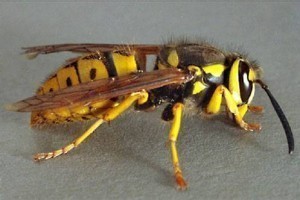How Small is the Smallest Bee?
A group of flying insects that is closely related to ants and wasps,  bees are known all over the world for their ability to produce beeswax and honey. Furthermore, they play a very important role in the pollination of various kinds of plants. With nine officially recognized families, approximately 20,000 species are already known today. They are found in almost all continents, with the exception of Antarctica. They live in habitats where insect-pollinated flowering plants are abundant. For a better understanding of these insects, it is important to learn the size of the smallest bee.
bees are known all over the world for their ability to produce beeswax and honey. Furthermore, they play a very important role in the pollination of various kinds of plants. With nine officially recognized families, approximately 20,000 species are already known today. They are found in almost all continents, with the exception of Antarctica. They live in habitats where insect-pollinated flowering plants are abundant. For a better understanding of these insects, it is important to learn the size of the smallest bee.
The Size of the Smallest Bee
How small is the smallest bee? The smallest bee is the world is stingless, which is called Trigona minima. The workers of this particular species grow approximately 2.1 millimeters. Because of its small size, it is commonly referred to as the dwarf bee.
Additional Facts and Other Important Details
There are many different families of bees, the most common of which are the Halictidae, Colletidae and Andrenidae. Aside from these, there are also other interesting families of bees like the Stenotritidae, Meganomiidae and Dasypodaidae. If Trigona minima is considered the smallest bee in the world, the largest is the leafcutter bee or Megachile pluto. Its females can grow up to 39 millimeters long. In the Northern Hemisphere, the most common bee is the sweat bees, which belong to the family Halictidae.
The European honeybee is probably the best-known species of bees in the world today, which is primarily famous for the ability to produce honey. This kind of bee eventually led to the development of apiculture or beekeeping. Aside from this, bees also play a major role in the food chain. Some of the common predators that feed on bees are bee wolves, mockingbirds as well as kingbirds. Additionally, dragonflies and Merops apiaster also feed on bees.
Some bees are considered nocturnal, specifically families like Apidae, Halictidae, Colletidae and Andrenidae. They usually have enlarged ocelli, which are ultra sensitive to dark and light. Some species of bees are solitary in nature. These include Osmia comifrons or the hornfaced bee, Osmia lignaria or the orchard mason bee and Xylocopa virginica or the Eastern carpenter bee.
Some bees are classified as eusocial and semisocial. These include the Africanized honeybees, stingless bees as well as bumblebees. Amongst these types of bees, the stingless bees are quite interesting because of their perennial colonies, complex nest architecture and their unique practice of mass provisioning.





